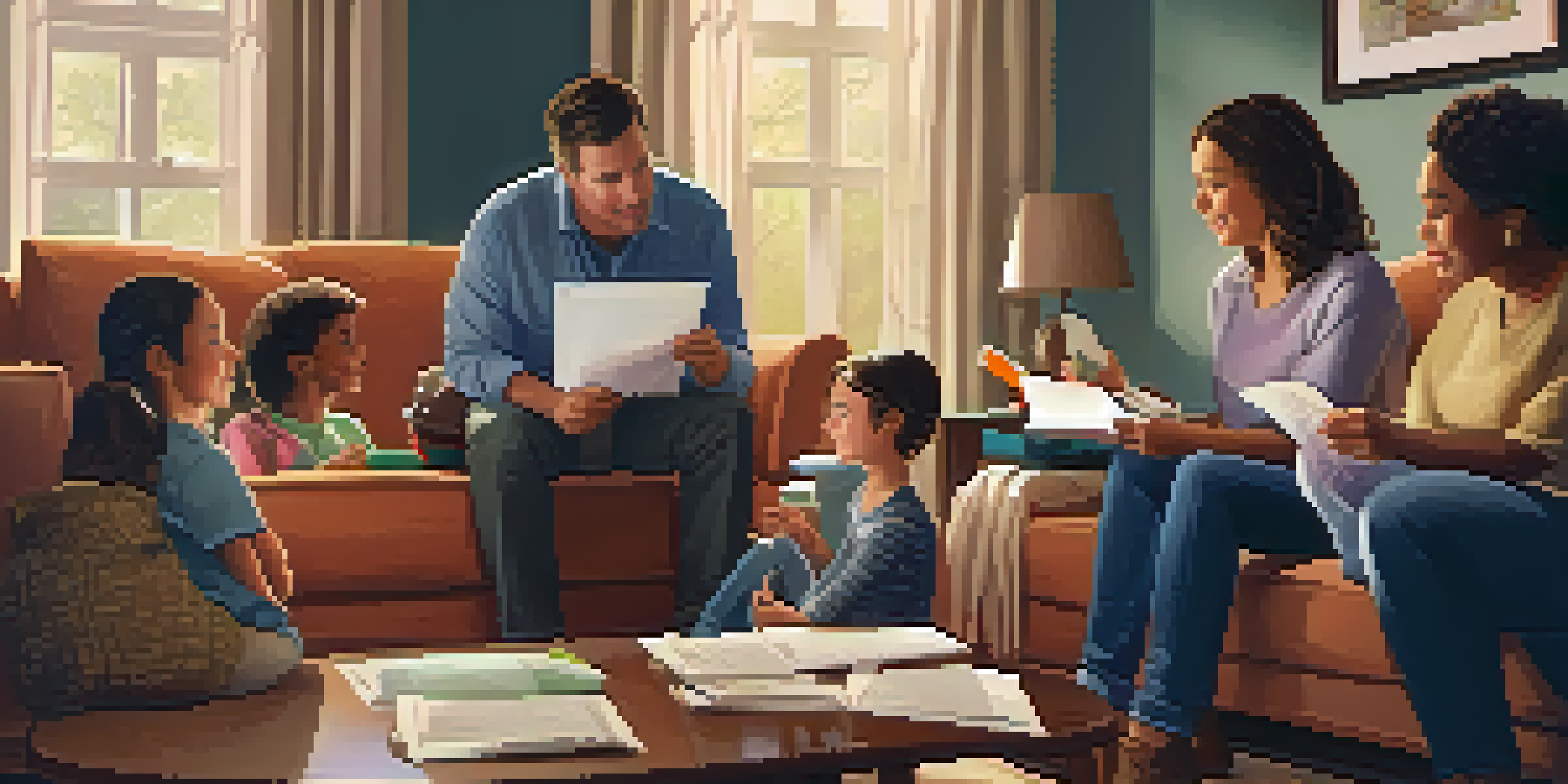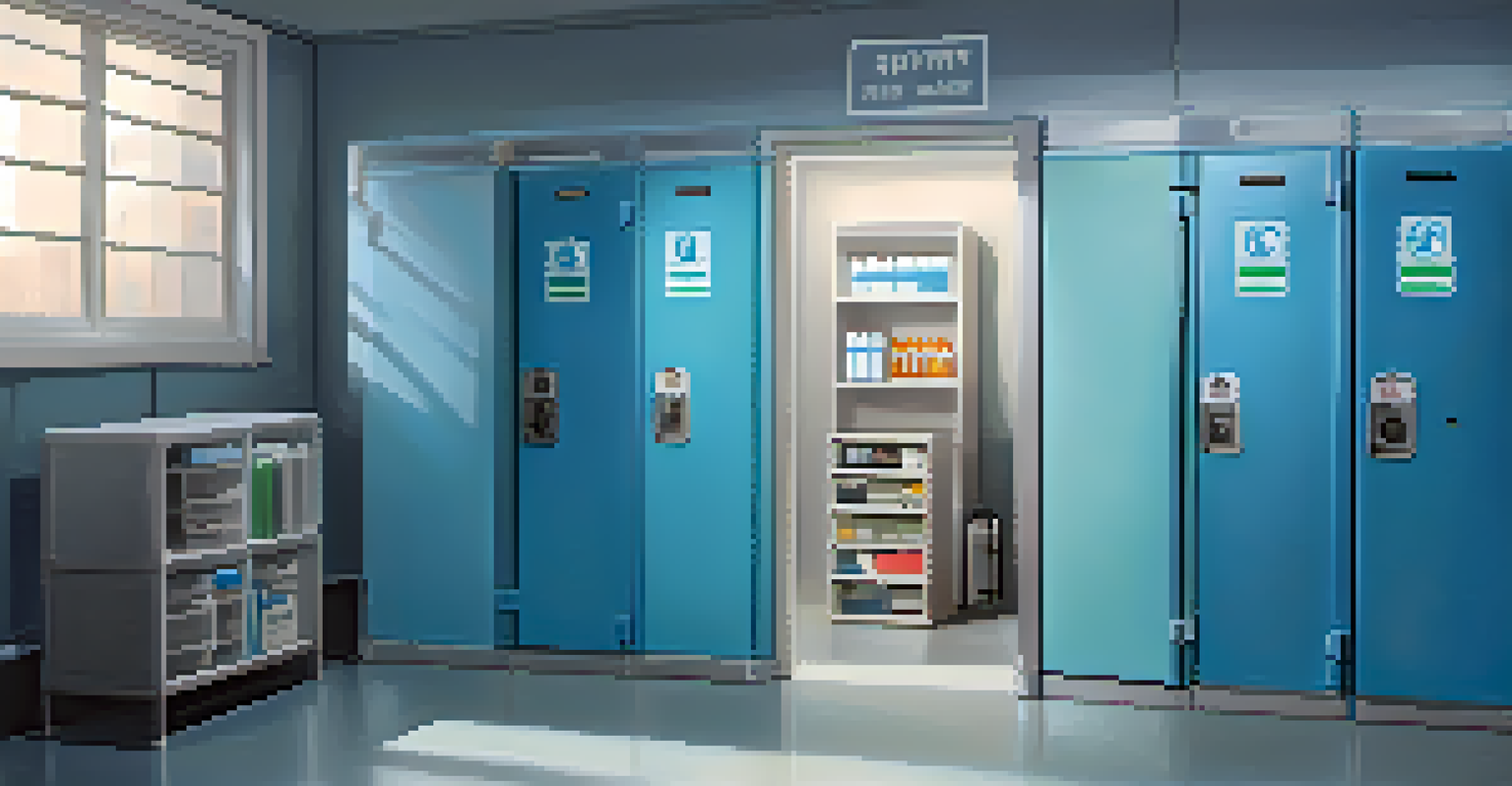Creating a Home Safety Plan: Self Defense Considerations

Understanding the Importance of a Home Safety Plan
A home safety plan is crucial for protecting yourself and your loved ones. It involves assessing potential risks and creating strategies to mitigate them. Just like having a fire escape plan, being prepared for self-defense can make all the difference in an emergency.
Safety isn't expensive, it's priceless.
By taking the time to understand your surroundings and possible threats, you empower yourself to act decisively if needed. This proactive approach not only enhances your safety but also promotes a sense of security at home. Remember, it's better to be prepared than to react in panic when a situation arises.
Moreover, a well-thought-out safety plan can bring peace of mind, knowing that you have measures in place to handle unexpected events. It’s about creating a safe haven where you and your family can thrive without unnecessary worry.
Assessing Your Home's Vulnerabilities
The first step in creating a home safety plan is to assess your home's vulnerabilities. Walk around your property and identify weak points such as unlocked doors, poorly lit areas, or overgrown shrubs that could provide cover for an intruder. This evaluation helps you understand where improvements are necessary.

Consider implementing simple changes, like installing motion-sensor lights or securing windows with locks. These adjustments can deter potential threats and enhance your overall safety. Think of your home as a fortress; every little reinforcement counts.
Assess Home Vulnerabilities
Regularly identifying and addressing weak points in your home can significantly enhance your safety.
Additionally, engaging in regular safety assessments can keep your defenses strong. Just as you would routinely check your smoke detectors, make it a habit to evaluate your home’s security features and update them as needed.
Developing an Emergency Communication Plan
An effective home safety plan includes an emergency communication strategy. In the event of a crisis, it's vital that everyone knows how to reach one another and where to meet. This ensures that all family members can stay connected and safe.
By failing to prepare, you are preparing to fail.
Designate a specific meeting place, like a neighbor's house or a local park, where everyone can regroup if needed. Share important contact numbers and establish a group messaging system to relay information quickly. Think of it as your family's lifeline during emergencies.
Moreover, practice your communication plan regularly. Just as fire drills prepare us for potential danger, rehearsing your emergency communications can help everyone feel more confident and calm when it matters most.
Educating Family Members on Self-Defense Techniques
Education is a fundamental aspect of any home safety plan, especially when it comes to self-defense. Teaching family members basic self-defense techniques can empower them to react appropriately in dangerous situations. Simple strategies, like how to escape a hold or where to strike, can make a significant difference.
Consider enrolling in self-defense classes as a family activity. Not only will you learn valuable skills, but you'll also strengthen bonds through shared experiences. It’s a fun way to enhance safety while promoting teamwork.
Develop Emergency Plans
Creating a clear emergency communication and meeting strategy ensures family members can stay connected during a crisis.
Remember, self-defense is not just about physical strength; it's also about awareness and confidence. Instilling these qualities in your family members can help them stay alert and make sound decisions in the face of danger.
Creating a Safe Room for Emergencies
One key element of your home safety plan is establishing a safe room. This designated area should be a secure place where you and your family can retreat during an emergency. Think of it as your safety nest, equipped with supplies and communication tools.
Ensure your safe room has sturdy locks, a phone, and basic emergency supplies, such as water and a first-aid kit. Make it comfortable and accessible so everyone knows where to go in a crisis. This preparation can greatly reduce anxiety when faced with potential threats.
Moreover, regularly check and restock your safe room supplies. Just like we keep our pantries full, ensuring your safe room is ready to go can provide peace of mind and readiness in any situation.
Utilizing Technology for Enhanced Safety
In today's digital age, technology can play a significant role in enhancing home safety. Smart home devices, such as security cameras and alarms, can help monitor your property and deter intruders. Think of them as your digital watchdogs, keeping an eye on things when you can't.
Consider integrating smart lighting systems that can be controlled remotely, allowing you to simulate your presence at home even when you're away. This simple trick can give potential intruders second thoughts about targeting your home.
Utilize Technology for Safety
Incorporating smart home devices can bolster your home security and provide peace of mind.
Additionally, familiarize yourself with personal safety apps that can alert authorities if you're in danger. With technology at your fingertips, you can elevate your home safety plan to new heights, making it more effective and responsive.
Regularly Reviewing and Updating Your Safety Plan
Creating a home safety plan is not a one-time task; it requires regular reviews and updates. As your family grows and changes, so do your safety needs. Schedule periodic evaluations to ensure your plan remains relevant and effective.
Discuss any new concerns or vulnerabilities that may arise, and involve all family members in the discussion. This collaborative approach fosters a sense of ownership and shared responsibility for safety. It’s like fine-tuning a musical instrument; regular adjustments ensure harmony.

By staying proactive and engaged, you can adapt your safety strategies to evolving circumstances, ensuring that your home remains a secure sanctuary for everyone.